Maybe it’s the sight of all those dozens (or hundreds) of beers and the copious amounts of booze available. Maybe it’s the warm amber glow of the vintage beer signs, or the mellow sepia tone of the old newspapered walls. Maybe it’s the tchocky-tchocky sound of a bartender in an old-school vest and armband shaking a gin martini. It could’ve been the fact that nearly every guest in the bar was dressed to the nines in their finest Prohibition-era duds. Whatever it was, my experience at Ye Olde Tap Room was transformative. I’m a fan for life.
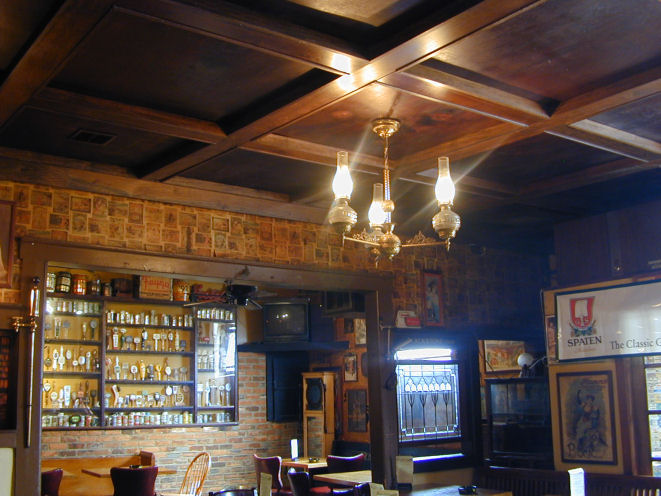
My night at Tap Room–or Ye Olde, or whatever you want to call it–on the east side of Detroit coincided with their annual blowout Prohibition Party, commemorating Michigan’s May 10th, 1933 ratification of the 21st amendment. We were, not surprisingly, the first state in the Union to give the heave-ho to dry days, and the city celebrated accordingly. Upwards of 30,000 revelers jamming the intersection of Alter and Charlevoix. Thanks to the Tap Room’s owner, Russell Mack, and to the generosity of long-term manager Mattie Armstrong, I managed to wheedle my way into working the nickel beer bar with Faustine and Jeff. Before I dive into the night’s experience, allow me to digress just a moment and sing the praises of people as passionate about bar history as these folks.
I’ve known Russell as part of the Detroit Drunken Historical Society events, especially the Working Papers series. (If you’re unfamiliar with the group, join now on Facebook or read this lovely piece about the Working Papers here: Working Papers, The Detroit Hub blog). He’s interested in all aspects of Detroit’s history and shares a devotion for bar history, especially in regards to his own bar. This man knows his stuff. He’s an affable guy with a truly splendid mustache, and he has done his research on the long and storied history of the Tap Room, which he’s owned since 1972. With the recent loss of Manya Soviak from Abick’s and Steve Francis of Mr. Steve’s Place, my money would be on Russ and Mary from Two Way as the next generation of hospitality heads in the grand old tradition of the city. Russ has cultivated an astonishingly dedicated and friendly staff, and it’s obvious that this is a group that likes one another very much. The word that kept popping into my head all night as I observed and slung PBR after PBR into a ceramic mug was “convivial”.
Over the course of the night, I learned a ton from Russell that I hadn’t known before, despite having done what I thought was some fairly extensive research. He was even kind enough to give me and Mary (yes, Mary from Two Way: it was a grand convergence of bar history) a guided tour of the basement and second floor. The bar served booze officially for only a year or so before Prohibition went into effect; after that, operations continued unabated underground with a full bar, dumbwaiter, and spit trough for the convenience of trolley patrons. The ground floor then became a comfort station for the trolley line that switched right outside the front door. The second floor was, as was typical, a gaming room, and the dumbwaiter trucked drinks up for thirsty guests. Also on the second floor was a built-in lookout bench to spy any uncooperative cops or feds. And the third floor? Come on now, you’ve been reading enough Prohibition Detroit history by now to take a guess at what happened on the third floor. Brothel, of course!
Now the second and third floors are apartments, and it was a good thing I had just signed a new lease on another apartment (which, coincidentally, just happened to have been a bar at one point as well), or I would now be entirely unproductive, happily and permanently perched on a barstool. Oh, and starting in 1922, the current Tap Room building housed the first Pigeon Club in the city. ‘Cuz apparently that’s a thing. Pigeon Clubs.
All night, ragtime and jazz filled the rooms as folks rolled in off the street, just off the border from Grosse Pointe. The admission charge for the night’s even included food and nickel beers served in a commemorative mug. Just like our grandfathers intended. The beer flowed, the music pumped, the crowd drank (and drank), and Faustine, Jeff and I poured froth and swapped bar horror stories. One group arrived fully feathered and fedora’d and ready to party. Soon the Charleston was being taught, and I tried my hand (very poorly). Fortunately there were no photos of this. But just look at this fantastic group of guests:
That’s a group that knows how to have a good time. Once the evening wound down, I bought a well-deserved round of whiskey for my fellow back bartenders. Then they bought me a round. Then I went to the front bar and Sam bought a round. Then Mattie showed up with one. The rest of the night faded away in a comfortable haze of tinkling piano and wailing trumpets, and I vowed that I’d make the trek to the east side weekly if at all possible.
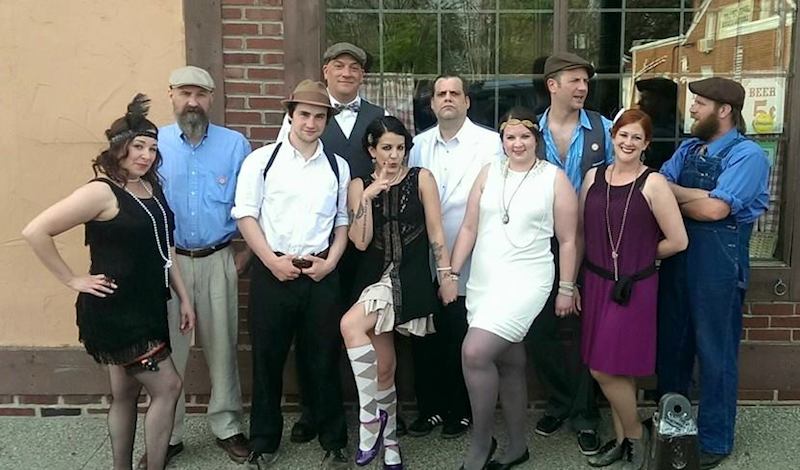
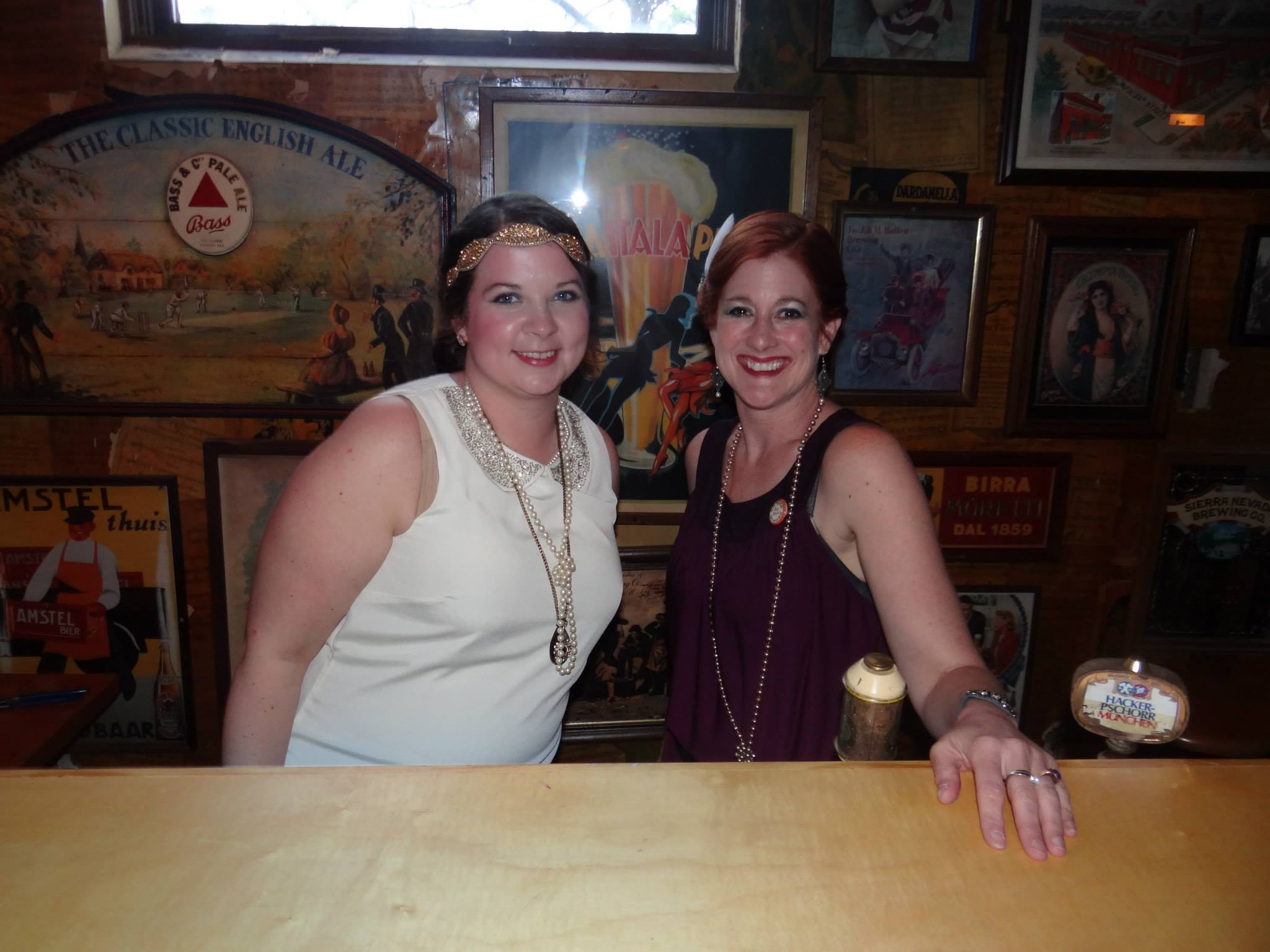
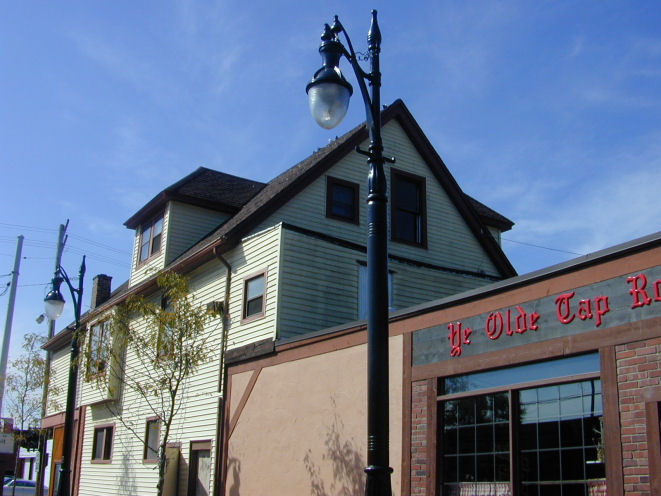
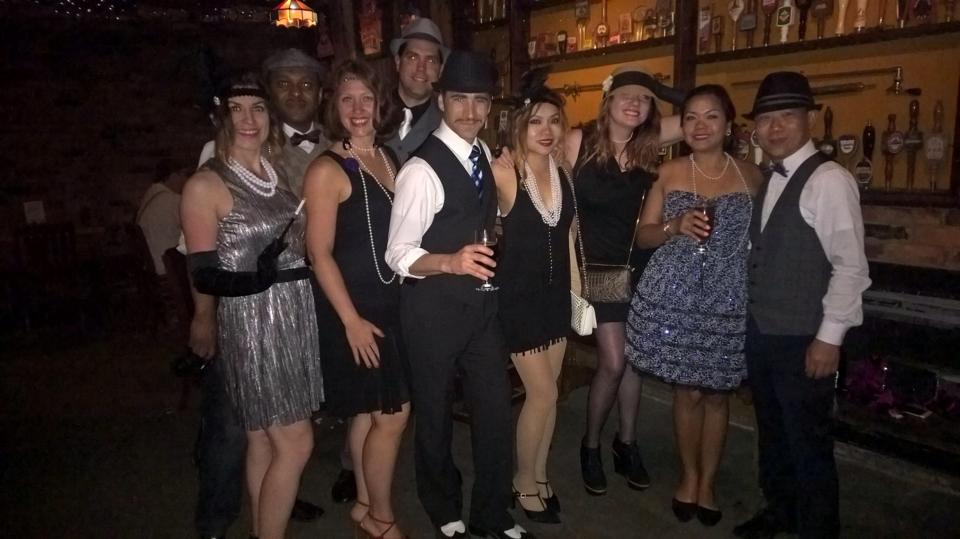
Be First to Comment